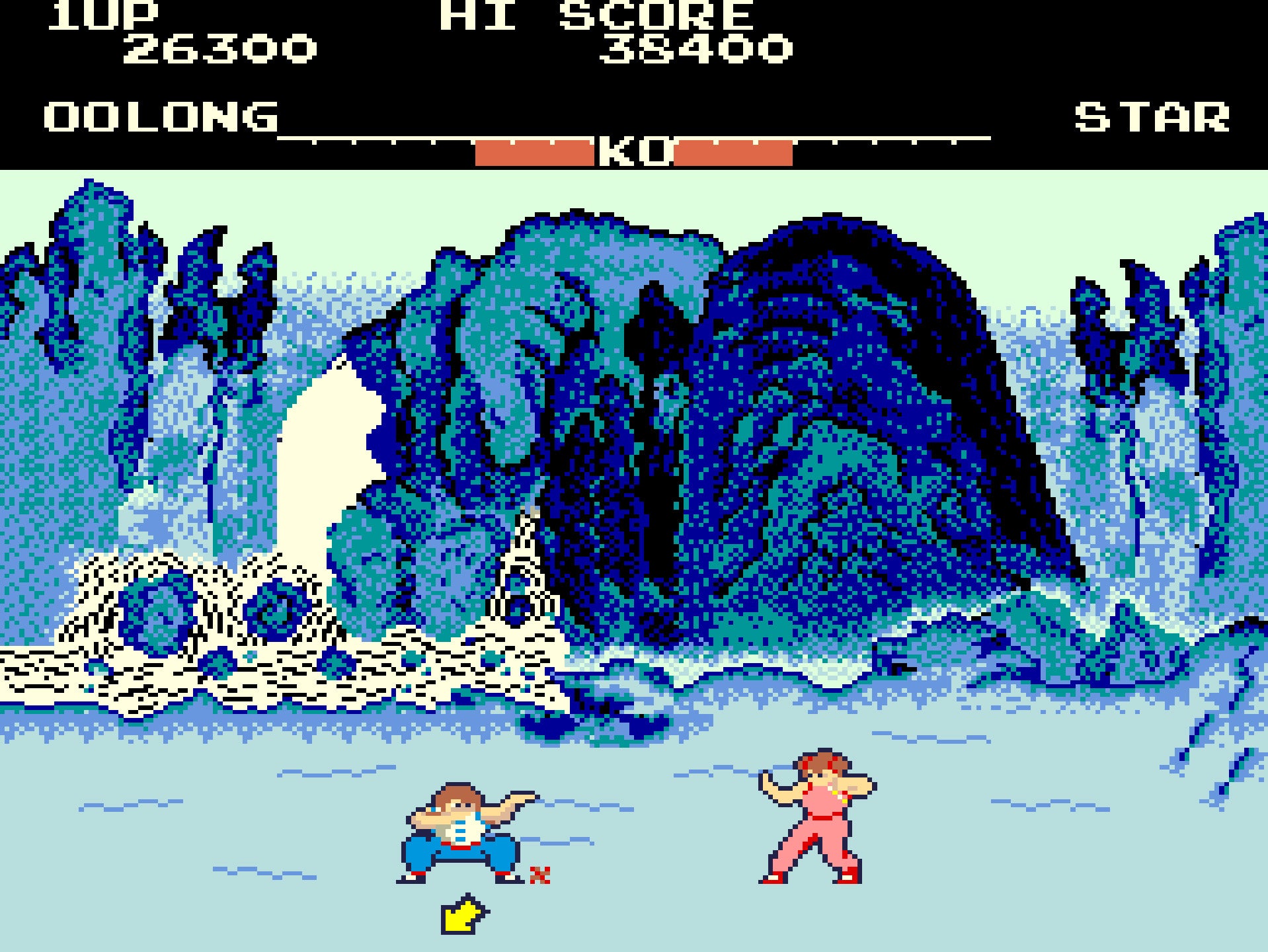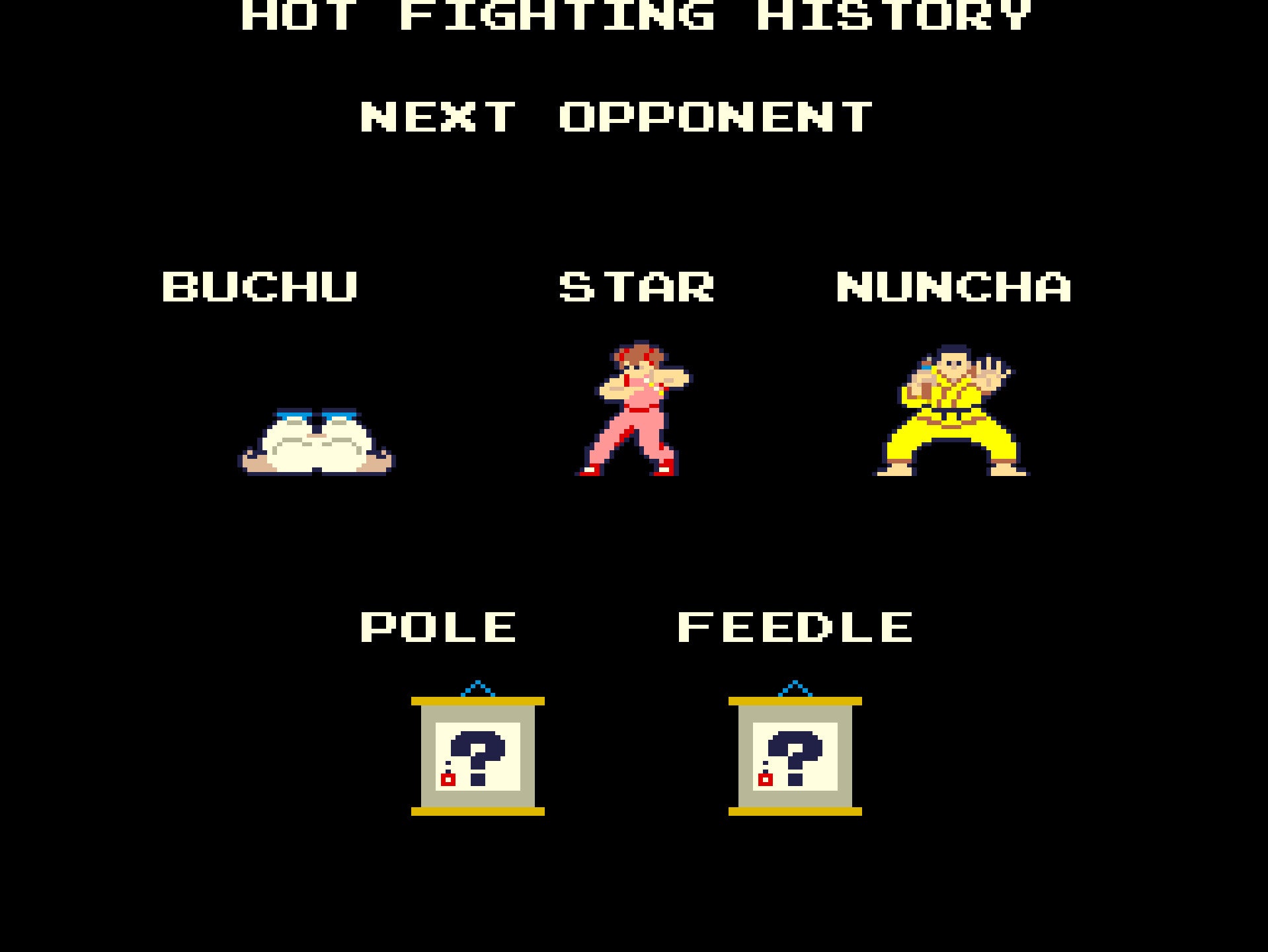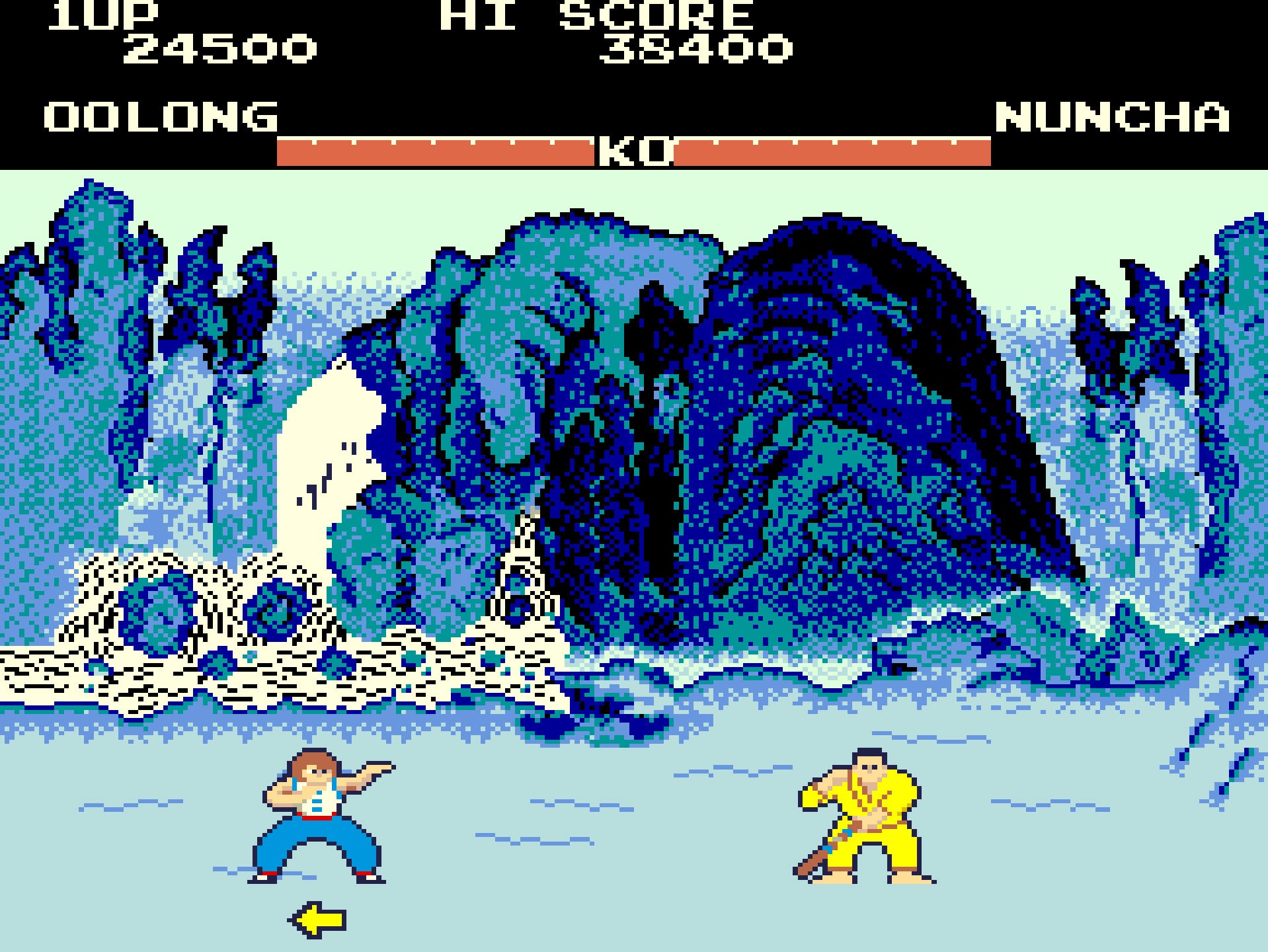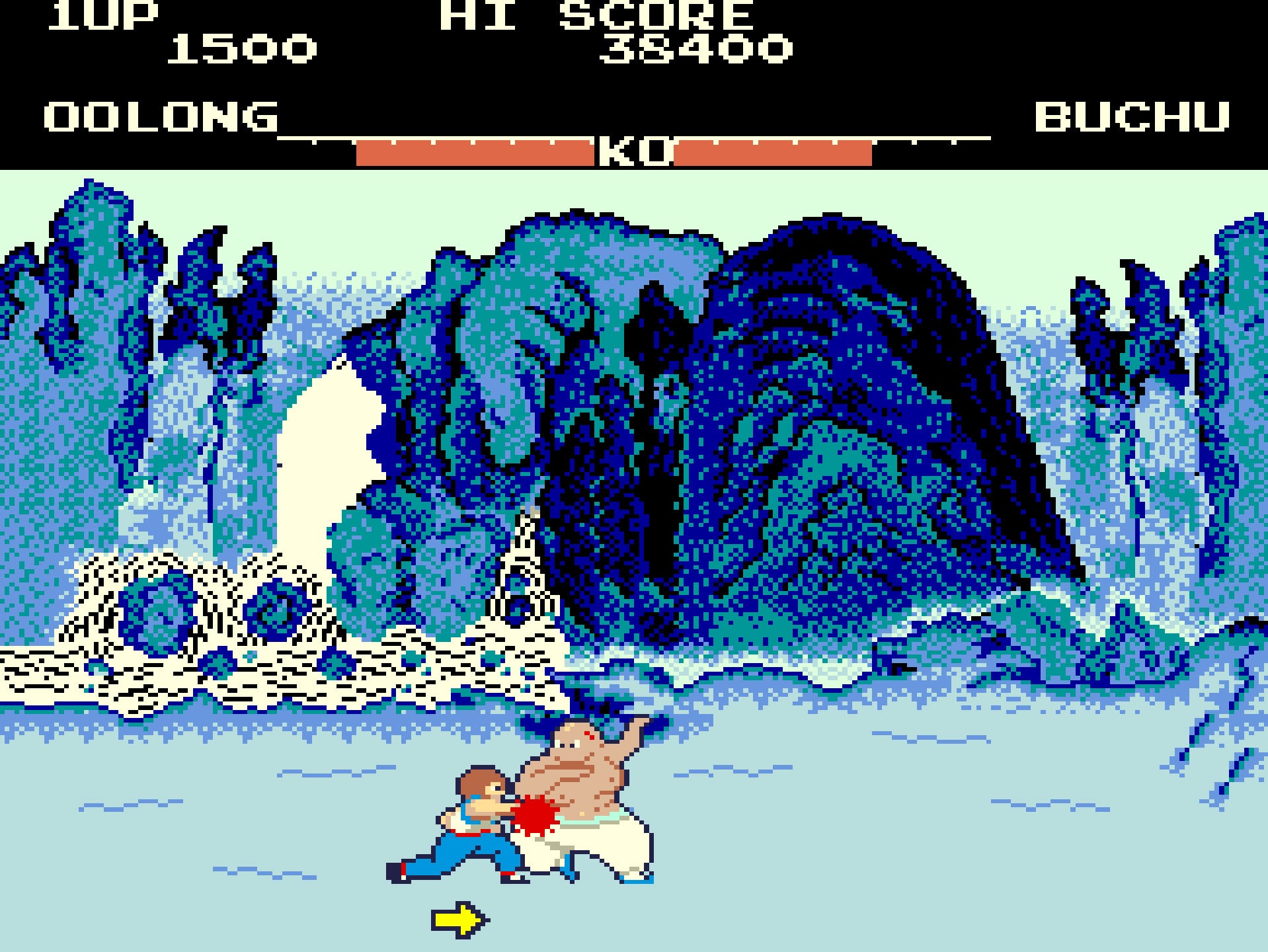Introduction
Released in 1985 by Konami, Yie Ar Kung-Fu is widely regarded as one of the most influential fighting games of its era. Building upon the foundation laid by earlier games like Karate Champ, this arcade classic introduced a diverse roster of opponents, each with distinct fighting styles and weapons. As one of the first games to incorporate such variety, Yie Ar Kung-Fu set the stage for the modern fighting game genre.

Development and History
- Developer: Konami
- Publisher: Konami
- Release Date: 1985
Konami developed Yie Ar Kung-Fu as an ambitious attempt to bring martial arts combat to life. Inspired by Bruce Lee films and traditional Chinese martial arts, the game’s vibrant visuals and dynamic gameplay quickly captured players’ imaginations. It was particularly notable for its variety of opponents, each with their own unique combat mechanics, a concept that became a hallmark of the fighting game genre.

Gameplay Video
Gameplay and Mechanics
Core Gameplay:
Players assume the role of Oolong, a young martial artist on a quest to become the Grand Master. The game features:
- Diverse Opponents: Players face 11 unique enemies, each with distinct fighting styles and weaponry, ranging from nunchaku-wielding masters to agile fighters with throwing stars.
- Fluid Combat: Simple yet responsive controls allow Oolong to perform punches, kicks, and jumps. These actions are complemented by dynamic animations for the time.
- Increasing Difficulty: Each opponent presents a progressively harder challenge, testing players’ reflexes and adaptability.
- One-on-One Duels: Unlike earlier games that focused on scoring, Yie Ar Kung-Fu emphasized defeating a single opponent at a time in structured rounds.
Innovation in Mechanics:
- Introduced distinct move sets and personalities for each enemy, laying the groundwork for character diversity in fighting games.
- Implemented life bars, allowing players to track damage dealt and received.

Cultural Impact and Legacy
Yie Ar Kung-Fu left a lasting impression on both players and developers, influencing future fighting games in several ways:
- Character Diversity: The game’s variety of opponents inspired the creation of iconic fighting rosters in later titles like Street Fighter II.
- Global Appeal: Its martial arts theme resonated with audiences worldwide, helping to popularize the genre.
- Historical Significance: Considered one of the earliest examples of the fighting game genre, it bridged the gap between early experiments like Karate Champ and the genre-defining games of the 1990s.

Fun Facts
- Bruce Lee Inspiration: Oolong’s character and moves were heavily influenced by Bruce Lee, a martial arts legend.
- Regional Popularity: The game was a massive hit in Japan and Europe but saw less success in the U.S. compared to later Konami titles.
- Home Ports: Yie Ar Kung-Fu was ported to multiple home systems, including the ZX Spectrum, Commodore 64, and NES, broadening its reach.

Conclusion
Yie Ar Kung-Fu stands as a pioneer in the fighting game genre, introducing mechanics and concepts that would shape future classics. Its focus on character diversity, fluid combat, and martial arts flair ensured its place in gaming history. Whether you’re revisiting it for nostalgia or exploring its legacy for the first time, Yie Ar Kung-Fu remains a must-play for fans of retro gaming.
Related Pages
- Karate Champ: Explore one of the earliest one-on-one fighting games.
- Street Fighter II: Discover the game that redefined the fighting game genre.
- Tekken: Learn about the 3D fighting game that became a fan favorite.

